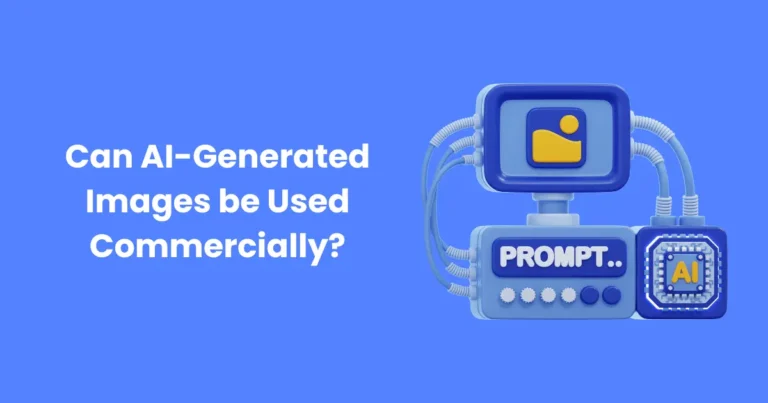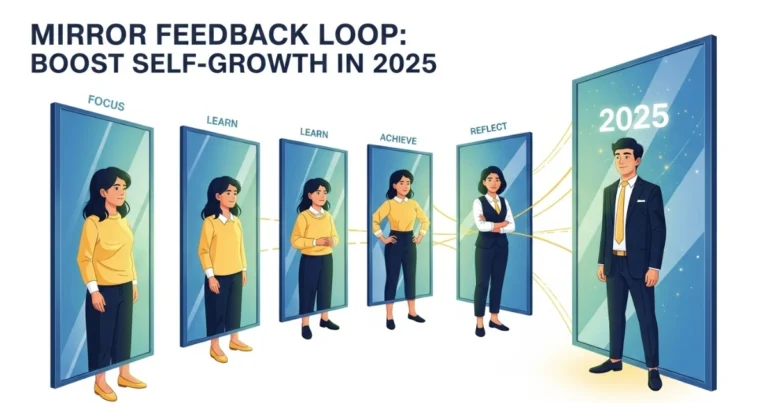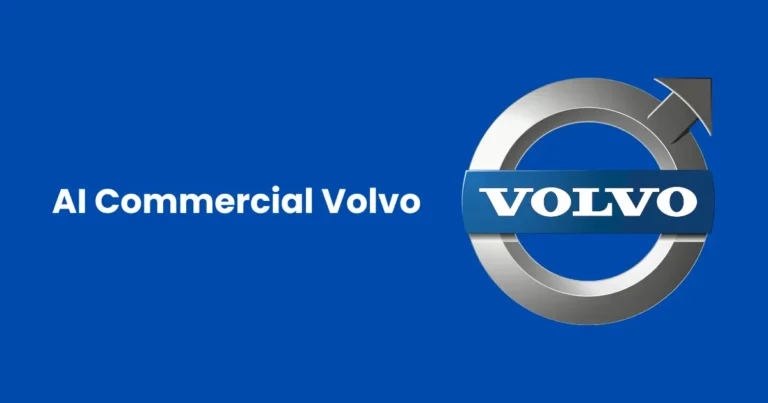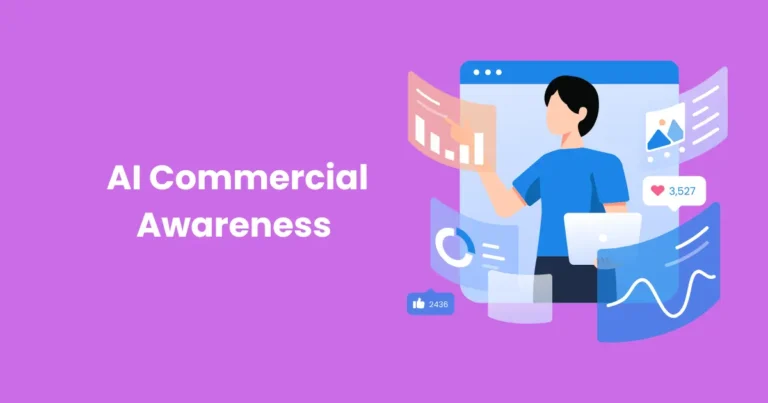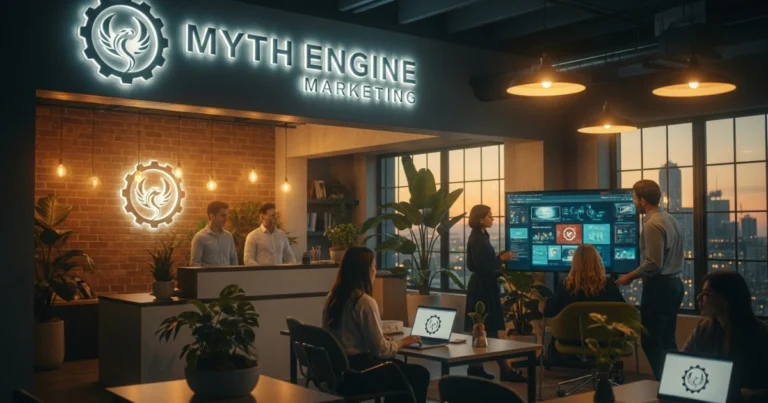AI Actors in Commercials | How AI Actors Are Created (2024)
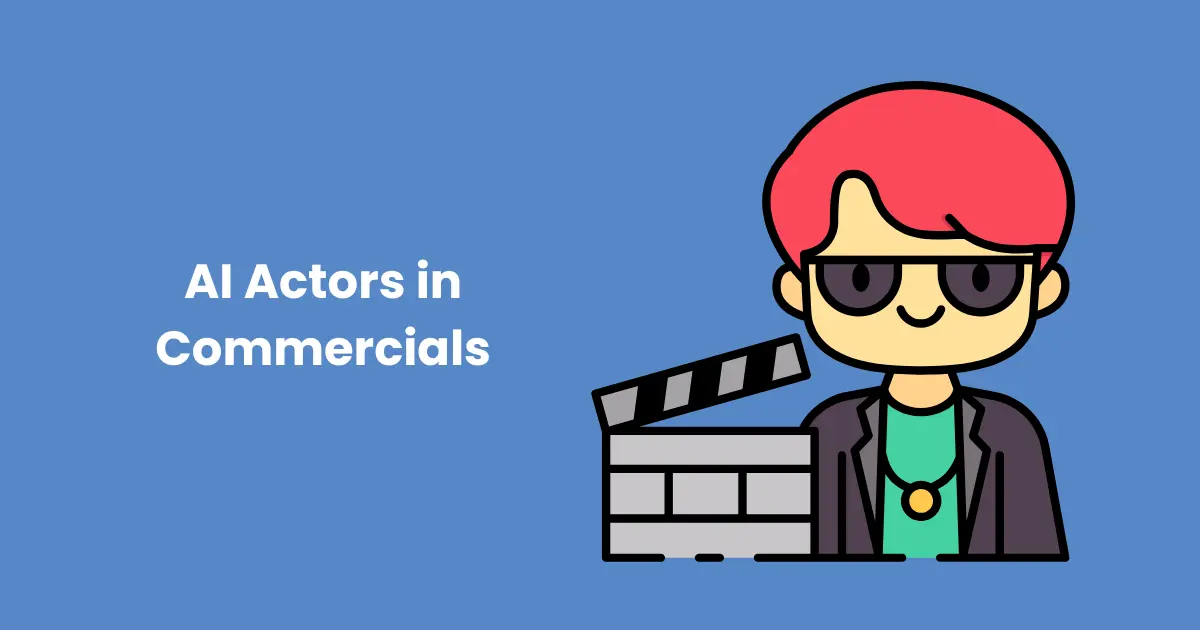
Contents
- 1 Benefits of Using AI Actors in Commercials
- 2 How AI Actors Are Created
- 3 Applications of AI Actors in Commercials
- 3.1 1. Enhancing Brand Storytelling
- 3.2 2. Multilingual and Multi-Cultural Commercials
- 3.3 3. Personalized Advertising Campaigns
- 3.4 4. Creating Immersive Virtual Experiences
- 3.5 5. Continuous Engagement Across Digital Platforms
- 3.6 6. Representing Futuristic or Fictional Characters
- 3.7 7. Reducing Time-to-Market for Campaigns
- 3.8 8. Bridging the Gap in Hybrid Campaigns
- 4 Challenges of Using AI Actors in Commercials
- 5 Real-World Examples of AI Actors in Advertising
- 6 Future of AI Actors in Commercials
- 6.1 1. Increasing Personalization at Scale
- 6.2 2. Seamless Integration with Virtual Reality (VR) and Augmented Reality (AR)
- 6.3 3. Cost-Effective Content Creation
- 6.4 4. Real-Time Adaptation to Viewer Reactions
- 6.5 5. Enhanced Emotional Intelligence
- 6.6 6. Ethical AI Frameworks
- 6.7 7. AI-Driven Global Campaigns
- 6.8 8. Hybrid AI-Human Collaborations
- 6.9 9. Integration with Social Media and Influencer Marketing
- 6.10 10. AI-Generated Autonomous Campaigns
- 6.11 Conclusion
AI actors in commercials are revolutionizing how brands create and deliver advertisements. These digital entities, powered by artificial intelligence, are designed to mimic human emotions, expressions, and voices, offering a seamless blend of realism and innovation. As businesses strive to connect with their audiences more effectively, the use of AI actors in commercials has become a game-changer, enabling personalized and scalable advertising campaigns. This cutting-edge approach not only reduces production costs but also ensures consistent performance across diverse markets, making AI actors a preferred choice for modern advertisers.
Benefits of Using AI Actors in Commercials

1. Cost Efficiency and Scalability
One of the most significant advantages of using AI actors in commercials is cost efficiency. Traditional advertising often involves high costs for hiring talent, production crews, and logistics. AI actors, once created, can be utilized repeatedly without additional fees. Moreover, they can scale effortlessly, allowing brands to generate multiple versions of commercials tailored to different audiences without increasing expenses.
2. Consistent Performance
AI actors deliver flawless performances every time. Unlike human actors, they do not experience fatigue, mood changes, or the need for retakes. This consistency ensures a uniform brand message across all campaigns, which is especially crucial for companies operating in multiple regions or launching global advertisements.
3. Personalization at Scale
AI actors enable the creation of hyper-personalized advertisements by adapting to specific audience preferences. With AI-driven insights, brands can craft commercials tailored to different demographics, languages, or cultural nuances, creating a deeper connection with their target markets. This level of personalization would be costly and time-consuming with human actors.
4. Creative Flexibility
AI actors provide unparalleled creative freedom. They can be designed to look, sound, and behave in any way a brand desires, whether embodying a futuristic character, mimicking a historical figure, or representing a highly stylized persona. This flexibility opens new avenues for storytelling and branding.
5. Enhanced Speed and Efficiency
By leveraging AI actors, brands can significantly reduce the time required for production. AI-generated characters can be animated, edited, and deployed rapidly, allowing businesses to meet tight deadlines without compromising quality. This is especially valuable in fast-moving industries where timely advertising campaigns are critical.
6. Global Reach and Multilingual Capability
AI actors can seamlessly adapt to different languages and accents, making them ideal for global campaigns. By incorporating AI-driven voice synthesis and lip-syncing technologies, brands can create commercials that resonate with diverse audiences, enhancing their global appeal and outreach.
These benefits highlight why AI actors in commercials are becoming indispensable in modern advertising strategies, paving the way for cost-effective, efficient, and innovative campaigns.
How AI Actors Are Created
The creation of AI actors for commercials involves a combination of advanced technologies, artistic direction, and meticulous attention to detail. Here’s a breakdown of the key steps in this innovative process:

1. Motion Capture and Animation
Motion capture technology is often used to create realistic movements for AI actors. Skilled performers wear suits equipped with sensors to record their movements, which are then translated into digital animations. These animations form the foundation of the AI actor’s physical behavior, ensuring lifelike gestures and expressions.
2. AI-Driven Voice Synthesis
AI actors require realistic voices to engage audiences effectively. Advanced AI voice synthesis technologies generate lifelike speech, complete with emotional nuances and dynamic tones. Brands can even customize the voice to suit their target demographic, ensuring alignment with their brand identity.
3. Facial Expressions and Emotional Realism
AI actors’ facial expressions are meticulously crafted using machine learning algorithms. By analyzing countless human expressions, these algorithms enable AI actors to convey emotions naturally. This attention to detail ensures that the AI characters resonate with viewers on an emotional level.
4. Integration with CGI and Realistic Rendering
Computer-generated imagery (CGI) and rendering software are used to bring AI actors to life visually. High-resolution textures, realistic lighting, and detailed modeling are applied to ensure the AI actor looks as authentic as possible. These technologies also allow for customization, enabling brands to design AI actors with specific appearances or features.
5. Machine Learning for Adaptability
AI actors are often trained using machine learning models to adapt to various scenarios and scripts. These models analyze patterns in speech, gestures, and audience reactions, enabling AI actors to refine their performances over time.
6. Post-Production Enhancements
Once the AI actor’s animations and voice are finalized, post-production processes enhance the final output. Techniques such as color grading, sound mixing, and special effects ensure that the AI actor seamlessly integrates into the commercial’s overall aesthetic.
The creation process combines technology and artistry, producing AI actors capable of captivating audiences with their lifelike presence and dynamic capabilities.
Applications of AI Actors in Commercials
AI actors are transforming the advertising industry with their versatility and adaptability. Here are some prominent applications of AI actors in commercials:

1. Enhancing Brand Storytelling
AI actors enable brands to craft unique and engaging narratives that capture audience attention. They can be designed to embody a specific character or persona that aligns with the brand’s identity, making advertisements more relatable and memorable.
2. Multilingual and Multi-Cultural Commercials
AI actors excel in delivering multilingual campaigns. By incorporating AI-driven voice synthesis and adaptable facial animations, they can communicate seamlessly in different languages and dialects. This allows brands to expand their reach and connect with diverse cultural audiences without the need for multiple human actors.
3. Personalized Advertising Campaigns
AI actors are ideal for creating personalized advertisements. By leveraging audience data, brands can customize AI actors’ appearances, voices, and messages to cater to specific demographics, resulting in highly targeted and effective campaigns.
4. Creating Immersive Virtual Experiences
Incorporating AI actors into virtual and augmented reality experiences allows brands to offer interactive and immersive commercials. AI actors can guide users through a virtual environment, making the advertisement more engaging and participatory.
5. Continuous Engagement Across Digital Platforms
AI actors can appear consistently across various digital platforms, from television to social media and even in-app advertisements. This consistency helps in reinforcing brand identity and ensuring cohesive messaging across all channels.
6. Representing Futuristic or Fictional Characters
AI actors are perfect for portraying futuristic, fantastical, or otherwise unattainable characters. These roles are difficult or impossible for human actors to achieve, making AI actors a preferred choice for brands looking to stand out with unique concepts.
7. Reducing Time-to-Market for Campaigns
AI actors streamline production timelines, making it possible for brands to launch campaigns quickly. This rapid turnaround is particularly valuable for seasonal promotions or events where timing is critical.
8. Bridging the Gap in Hybrid Campaigns
AI actors can complement live-action commercials by interacting with human actors, blending digital innovation with human authenticity. This hybrid approach offers a fresh perspective and enhances storytelling potential.
By incorporating AI actors into their strategies, brands can innovate and capture their audience’s attention, setting new standards in the world of advertising.
Challenges of Using AI Actors in Commercials
While AI actors offer numerous advantages, their adoption in commercials comes with significant challenges. Here are the key hurdles brands and creators face:

1. Ethical Concerns and Authenticity
AI actors raise ethical questions about authenticity in advertising. Viewers may feel deceived if they discover that a character they connected with isn’t real. This lack of transparency can lead to a loss of trust, making it crucial for brands to disclose the use of AI actors.
2. Balancing AI and Human Creativity
AI actors rely heavily on algorithms and pre-programmed data, which can limit creative spontaneity. Human actors bring unique, organic elements to their performances that AI struggles to replicate. Striking the right balance between AI-driven efficiency and human creativity is a persistent challenge.
3. Technical Limitations
Despite advancements, AI technology is not without flaws. Imperfections in rendering, voice synthesis, or motion capture can result in unrealistic or awkward outputs that distract viewers. Technical glitches during production or post-production can delay campaigns and increase costs.
4. High Initial Investment
Developing realistic AI actors requires a significant initial investment in technology, talent, and software. For smaller brands or startups, these costs can be prohibitive, making AI actors more accessible to larger corporations with extensive budgets.
5. Intellectual Property and Copyright Issues
Using AI actors may create ambiguity around intellectual property rights. Questions about who owns the AI-generated characters—the brand, the developers, or the software provider—can lead to legal disputes, complicating their use in commercials.
6. Audience Perception and Acceptance
While younger, tech-savvy audiences may embrace AI actors, older or less tech-oriented viewers might find them unsettling or impersonal. Brands must navigate these perceptions carefully to ensure their campaigns resonate with their target demographics.
7. Dependence on Advanced Technology
AI actors rely on high-end technology, including powerful computing systems and advanced software. This dependence makes their production vulnerable to system failures, cyberattacks, or software bugs, potentially disrupting campaigns.
8. Limited Emotional Depth
Although AI actors can mimic emotions, they often lack the nuanced emotional depth and subtlety that human actors bring to a performance. This limitation can make it challenging to create advertisements that require deep emotional engagement.
These challenges underscore the need for careful planning and execution when incorporating AI actors into commercials. By addressing these obstacles, brands can harness the full potential of AI while minimizing risks and maximizing audience impact.
Real-World Examples of AI Actors in Advertising
The adoption of AI actors in commercials is no longer a futuristic concept but a reality embraced by major brands. Here are some notable real-world examples demonstrating how AI actors are transforming advertising:

1. Balmain’s Virtual Army
The luxury fashion brand Balmain introduced a “Virtual Army” of AI models to showcase its collections. These AI actors were designed to represent diverse ethnicities and body types, enabling the brand to reach a global audience while staying inclusive and innovative.
2. Malaria Must Die Campaign
The campaign featured a digitally recreated version of David Beckham delivering a multilingual message to raise awareness about malaria. AI-driven lip-sync technology was used to make Beckham appear as if he was speaking in several languages, creating a powerful and personalized message for different audiences.
3. Synthesia’s AI-Powered Video Ads
Synthesia, a company specializing in AI video creation, collaborates with brands to produce ads featuring AI-generated presenters. These AI actors deliver customized messages in multiple languages and accents, helping brands achieve localized marketing with minimal cost and effort.
4. Kuki the Chatbot
Kuki, an AI chatbot with a human-like persona, has been featured in interactive advertisements. By blending conversational AI with visually engaging avatars, Kuki helps brands connect with younger audiences through gamified and participatory ad campaigns.
5. Lil Miquela’s Brand Partnerships
Lil Miquela, a virtual influencer powered by AI, has partnered with brands like Calvin Klein and Prada for advertising campaigns. As an AI actor, Miquela engages audiences on social media while representing these brands in commercials and product endorsements.
6. AI Models in Nike’s Digital Campaigns
Nike has used AI-generated athletes in some of its digital campaigns to showcase the versatility and functionality of its products. These AI actors perform complex physical activities with precision, demonstrating product features while maintaining a futuristic appeal.
7. Samsung’s NEON Project
Samsung introduced NEON, an AI-powered “artificial human,” capable of displaying lifelike expressions, gestures, and conversations. Though still in development, NEON has the potential to revolutionize advertising by offering ultra-realistic AI actors for commercials and brand interactions.
8. Coca-Cola’s Interactive Digital Ads
Coca-Cola utilized AI actors in its interactive digital campaigns, allowing virtual characters to interact with audiences in real-time. These AI actors enhanced engagement by personalizing responses, creating a memorable experience for users.
These examples illustrate the growing influence of AI actors in the advertising world. From global campaigns to niche audiences, AI actors offer limitless possibilities for brands aiming to captivate and connect with their audiences in innovative ways.
Future of AI Actors in Commercials
The future of AI actors in commercials promises to be transformative, redefining the way brands engage with their audiences. Here are the key trends and developments expected in the coming years:

1. Increasing Personalization at Scale
AI actors will allow brands to deliver hyper-personalized advertisements tailored to individual preferences, demographics, and behaviors. Advanced machine learning will enable these actors to adapt their expressions, voices, and messages to resonate with specific audience segments.
2. Seamless Integration with Virtual Reality (VR) and Augmented Reality (AR)
As VR and AR technologies evolve, AI actors will play a pivotal role in creating immersive and interactive advertisements. Viewers will engage directly with AI actors in virtual environments, blurring the line between entertainment and advertising.
3. Cost-Effective Content Creation
Advances in AI technology will make it more affordable to create realistic AI actors, reducing the costs associated with traditional video production. This democratization will allow even small businesses to leverage AI actors in their campaigns.
4. Real-Time Adaptation to Viewer Reactions
Future AI actors will likely integrate with real-time data analytics, enabling them to adapt their performance based on audience reactions. For example, an AI actor might change its tone or message mid-ad to align with viewer sentiment.
5. Enhanced Emotional Intelligence
As emotional AI improves, AI actors will become better at portraying complex emotions and building deeper connections with audiences. This development will help brands deliver more impactful storytelling.
6. Ethical AI Frameworks
With the rise of AI actors, there will be a growing emphasis on establishing ethical guidelines for their use. Transparency in AI-generated content, consent in data usage, and intellectual property rights will shape the future landscape of AI in advertising.
7. AI-Driven Global Campaigns
AI actors will break language and cultural barriers, enabling brands to launch synchronized global campaigns. With the ability to localize messages instantly, AI actors will help companies maintain a consistent global presence while catering to regional nuances.
8. Hybrid AI-Human Collaborations
The future may see more hybrid advertisements where AI actors interact seamlessly with human actors. This collaboration will offer the best of both worlds: AI-driven efficiency and human emotional depth.
9. Integration with Social Media and Influencer Marketing
AI actors are expected to dominate social media platforms as virtual influencers, expanding their role in marketing strategies. They will engage with audiences through interactive content, live-streaming, and direct messaging, creating a more personal connection with users.
10. AI-Generated Autonomous Campaigns
In the long term, AI actors may lead fully autonomous advertising campaigns, from concept creation to execution. AI will not only act in commercials but also write scripts, generate visual content, and analyze campaign performance.
The future of AI actors in commercials is brimming with potential. By embracing these advancements, brands can create innovative, engaging, and efficient advertising strategies that captivate audiences and stay ahead in a competitive market.
Conclusion
The rise of AI actors in commercials is revolutionizing the advertising landscape, offering unparalleled opportunities for creativity, efficiency, and personalization. These digital performers empower brands to craft dynamic campaigns that resonate with diverse audiences while overcoming traditional limitations like time, cost, and geographical barriers. By enabling hyper-realistic visuals and multilingual capabilities, AI actors are not just transforming how brands communicate but also broadening the horizons of what’s possible in advertising.
However, this innovation is not without its challenges. Ethical concerns, technical limitations, and audience perceptions present hurdles that brands must navigate carefully. As technology advances, the integration of AI actors will require a balance between automation and human creativity to ensure authenticity and emotional engagement. With proper frameworks and strategic implementation, AI actors can redefine the future of commercials, providing brands with an edge in a competitive and ever-evolving digital world.

